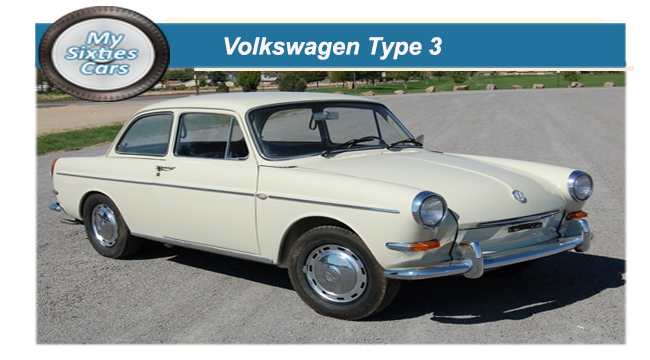 First seen at the 1961 Frankfurt Motor Show, the VW 1500, or Type 3, was only the second passenger car produced by Volkswagen.
First seen at the 1961 Frankfurt Motor Show, the VW 1500, or Type 3, was only the second passenger car produced by Volkswagen.
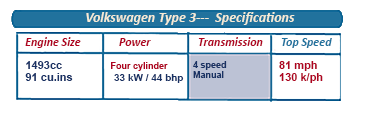 As would be expected, the basic design and engineering principles used in the Type 3 were very closely aligned to those of the Beetle, with a rear-mounted flat-four air-cooled 1493cc (91) cu in engine.
As would be expected, the basic design and engineering principles used in the Type 3 were very closely aligned to those of the Beetle, with a rear-mounted flat-four air-cooled 1493cc (91) cu in engine.
As a result of some innovative design work from Pininfarina, despite the position of the engine, Volkswagen succeeded in positioning a fully insulated luggage compartment at the rear of the car, in addition to one at the front.
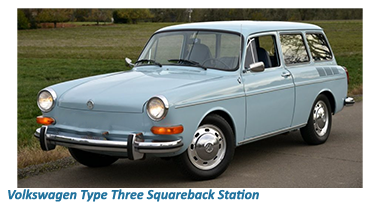 Following on the initial success of the two-door “Notchback” sedan, a two-door Fastback followed, that looked like a modern hatchback, but with a conventional boot and just two doors.
Following on the initial success of the two-door “Notchback” sedan, a two-door Fastback followed, that looked like a modern hatchback, but with a conventional boot and just two doors.
Apart from all aspects of passenger comfort, each of the Type 3 body styles provided the most generous amount of baggage space.
![]()
For example, the total storage space (front and back) on the Type 3 Notchback was 13.5 cubic feet (0.38 cubic meter), the Fastback 14 cubic feet (0.38 cubic meter).
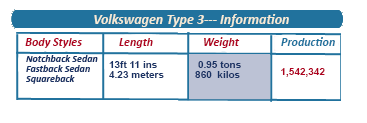 The cream of the crop was the Squareback estate which provided a total of 31.7 cubic feet (0.90 cubic meters) when the back seat was upright and an incredible 42.4 cubic feet (1.20 cubic meter) when the rear seat was folded, making for an excellent dual-purpose vehicle.
The cream of the crop was the Squareback estate which provided a total of 31.7 cubic feet (0.90 cubic meters) when the back seat was upright and an incredible 42.4 cubic feet (1.20 cubic meter) when the rear seat was folded, making for an excellent dual-purpose vehicle.
 By 1965 the 1493cc (91 cu in) engine was complemented by a 1584cc (97 cu in) unit after the introduction of the 1600TL.
By 1965 the 1493cc (91 cu in) engine was complemented by a 1584cc (97 cu in) unit after the introduction of the 1600TL.
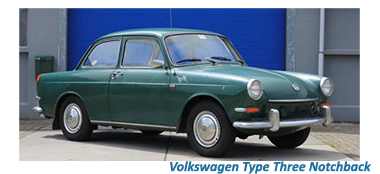 The following year, forever improving the Type 3’s performance levels, the 1500cc (91 cu in) engine was discontinued, and all Type 3s came fitted with a 1584cc (97 cu in) units in its place.
The following year, forever improving the Type 3’s performance levels, the 1500cc (91 cu in) engine was discontinued, and all Type 3s came fitted with a 1584cc (97 cu in) units in its place.
Volkswagen produced around 1.5 million Type 3 variants before ending global production in 1973, although output in West Germany was already easing off considerably towards the end of the Sixties, with the introduction of the Type 4.





